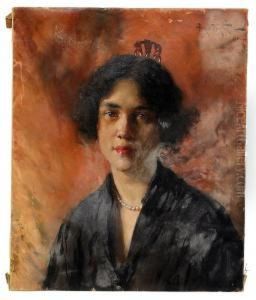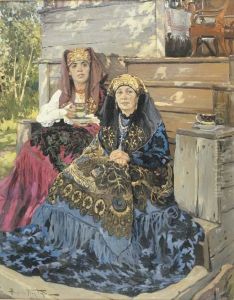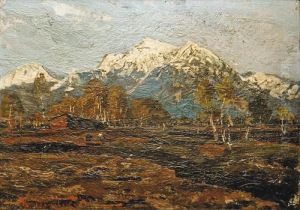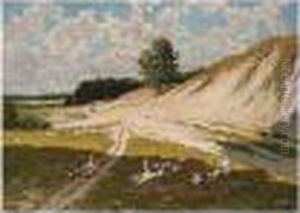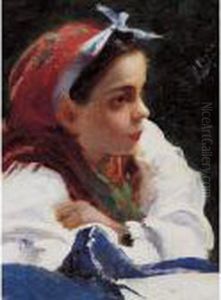Aleksander Vladimirovich Makovskii Paintings
Aleksander Vladimirovich Makovsky was a Russian painter and graphic artist, born on August 6, 1869, in the prominent Makovsky family, which played a significant role in the Russian art scene. His father, Vladimir Makovsky, was a celebrated painter of the Russian Realist school, and his uncle, Konstantin Makovsky, was also a renowned artist. Growing up in such an environment, Aleksander was exposed to art from a young age.
Aleksander Makovsky studied at the Moscow School of Painting, Sculpture and Architecture, where he was influenced by his father and other prominent artists of the time. He was particularly interested in genre painting and portraits, following in the footsteps of his father's focus on the lives and struggles of ordinary people. After completing his studies, Makovsky became an active member of various artistic societies, including the Moscow Society of Lovers of the Arts.
Throughout his career, Makovsky exhibited his works at numerous exhibitions, achieving recognition for his artistic talent. He participated in the exhibitions of the Moscow Society of Lovers of the Arts, the St. Petersburg Society of Artists, and other notable venues. His works often depicted scenes of Russian life and were characterized by a warm, empathetic portrayal of his subjects.
The Russian Revolution of 1917 had a profound impact on the art community, and Makovsky's life and career were no exception. The cultural shift brought about by the new Soviet regime led to changes in the kinds of art that were promoted and supported. During this period, Makovsky continued to work, but like many of his contemporaries, he faced new challenges in adapting his art to the changing political landscape.
Aleksander Vladimirovich Makovsky passed away on February 20, 1924. Although less well-known than his father or uncle, Makovsky's contributions to Russian art are remembered for their authenticity and heartfelt representation of Russian society. His works can be found in various museums and private collections in Russia and abroad, providing insight into the pre-revolutionary era and the transitional period of Russian history.
